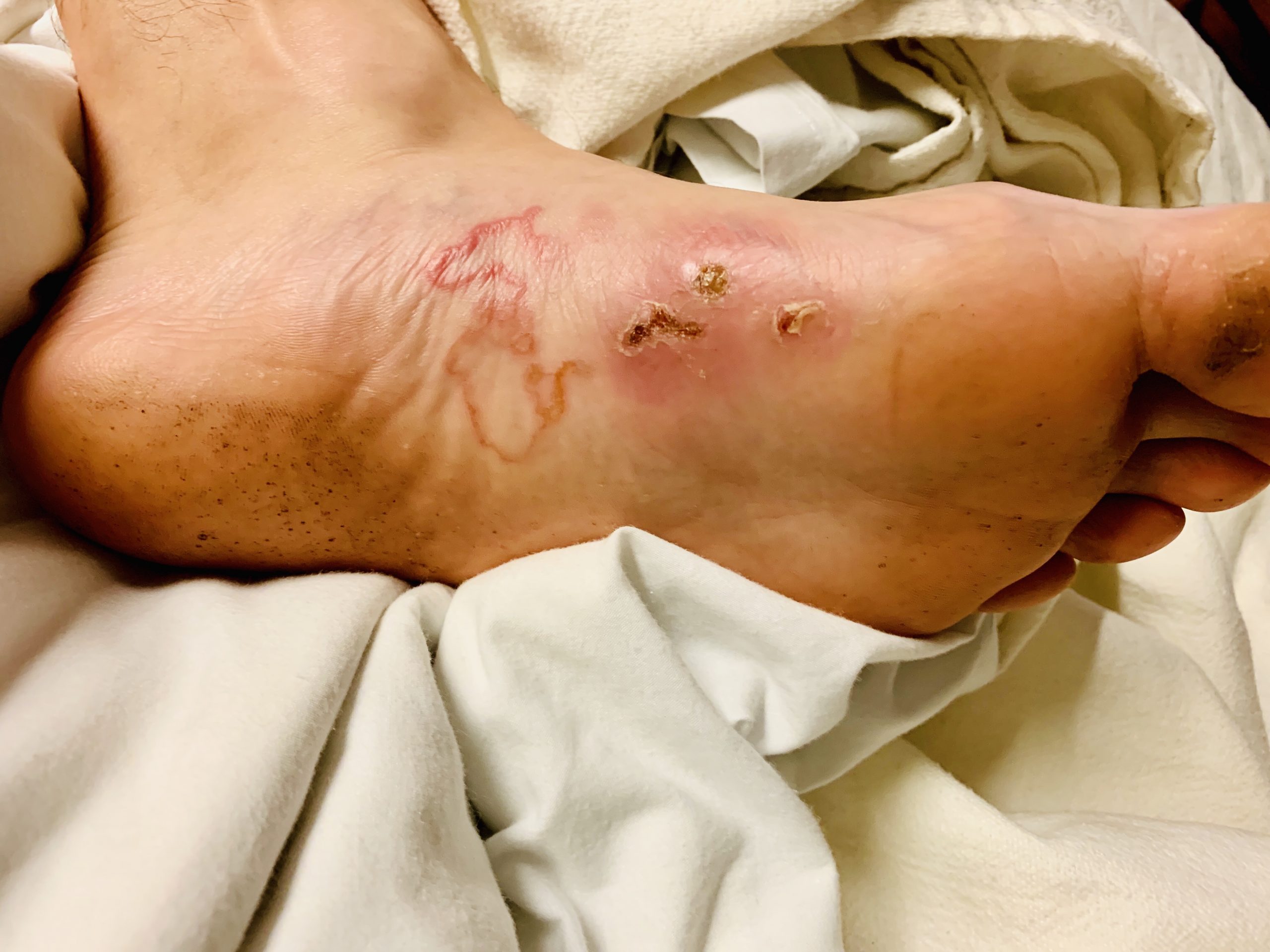Case Presentation: A 28-year-old male with no significant past medical history presented with acute onset of left arm numbness, paresthesia, itching, and rash. The patient works as a roofer, where he occasionally walks barefoot, and reported an injury to his left hand about 2 weeks prior to presentation. The injured area was covered with blisters, associated with visible linear redness (serpiginous) extending from the blister site at the base of the hand up to the arm that migrated overnight. A similar linear rash was noted in the left plantar foot with surrounding redness (Figure 1). Patient denied having any constitutional or respiratory symptoms. On presentation, blood pressure was 106/62mmHg, heart rate 72 beats/minute, temperature 98.4oF, respiratory rate 16/minute, and oxygen saturation of 100% on room air. Laboratory findings showed white blood cells 15.3×109/L, 15% eosinophils, hemoglobin 15.7mg/dL, platelets 380×109/L, C-reactive protein 28.9mg/dL, erythrocyte sedimentation rate 32mm/hour. The patient was diagnosed with a hookworm-related cutaneous larva migrans (HrCLM). The patient was treated with a single dose of Ivermectin and the symptoms improved within a few days.
Discussion: HrCLM is the most frequent travel-associated skin disease of tropical origin caused by the penetration of the skin by a cat, dog, or other mammal nematode larvae. Although frequently seen in tropical countries, this tropical dermatosis is not sufficiently well known by clinicians in western countries, and this can delay diagnosis and effective treatment by up to 22 months.The incubation period of HrCLM is usually several days. The striking symptom of HrCLM is pruritus localized at the site of the eruption and the characteristic sign is creeping dermatitis. The most frequent anatomic locations are the feet (in more than 50% of individuals), followed by the buttocks and thighs. HrCLM can present in a self-limited disseminated form called Löffler syndrome.HrCLM is a clinical diagnosis based on history of exposure to contaminated soil and associated with a characteristics serpiginous skin lesion. Blood tests are not necessary for diagnosis and are not currently recommended. Eosinophilia is reported in 20% in tropical travelers. Skin biopsy can be pursued in difficult presentations and may reveal nematode larvae in the follicular canal.The treatment of choice is a single-dose of ivermectin 200µg/kg. Ivermectin affects nematode motility, feeding and reproduction acting via ligand-gated chloride channels. Our case demonstrates a classic HrCLM clinical presentation with excellent response to treatment, but a unique absence of risk factors, in which traditional geographic distribution and disease exposure (i.e. contaminated soil) were lacking.
Conclusions: HrCLM is a clinical diagnosis, and it is predominantly tropical disease that is rarely seen in this part of the world. Clinicians need to keep this differential diagnosis in mind as it responds very well to the treatment, if diagnosed promptly. A single dose of Ivermectin is sufficient for treatment.

